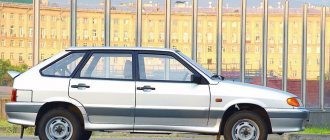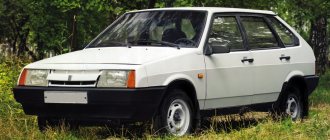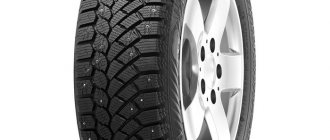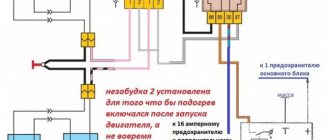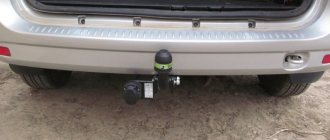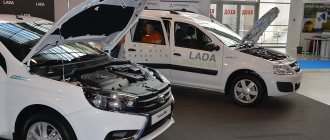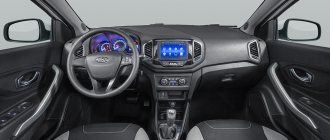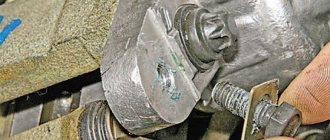Having a relatively small amount at their disposal to buy a used car, quite often domestic car enthusiasts look towards Russian cars or old foreign cars.
Despite all the existing shortcomings and known errors, cars such as Lada Kalina and Daewoo Nexia are actively used and are often sold and bought on the secondary market. These two cars have similar price tags, they are equally poorly assembled, and have certain disadvantages. But there are still buyers.
For an objective comparison, the restyled version of the Daewoo Nexia car will be compared, as well as the first generation Lada Kalina. They were produced at approximately the same time, and therefore they can be considered conditional competitors.
General information about machines
Back in the summer of 2008, UZ-Daewoo officially presented the second generation of its Nexia sedan. Although in reality the car simply went through a deep restyling, remaining the same old Nexia with characteristic problems, but with a slightly changed appearance. Commercial production lasted until 2021, after which Nexia disappeared completely.
The car is based on the American T-Body platform developed by General Motors. Here the engine is located transversely. This platform migrated to the Nexia from the Opel Kadett E. The front axle has an independent shock-absorbing suspension with MacPherson struts, and the rear has a semi-independent system with an elastic cross member. The Nexia has a rack and pinion steering mechanism, and only in expensive versions it was supplemented with a hydraulic booster. The front brakes are disc and ventilated. Rear classic drums. ABS has remained an unaffordable luxury for Nexia.
AvtoVAZ began developing the Lada Kalina around 1993. But only 7 years later the prototype was officially presented. Kalina was launched into mass production in November 2004. The car was assembled until the end of spring 2011, after which a successor appeared in the form of the Lada Granta. Then the 2nd generation Kalina came out, but it is not entirely correct to compare Nexia with it due to the obvious superiority of the newer Russian car over the outdated South Korean foreign car.
The first generation Kalina is built on a front-wheel drive platform with index 2190. The front suspension is independent, with MacPherson struts and anti-roll bars. At the rear there is a semi-independent torsion beam and also with a stabilizer. The steering mechanism is rack and pinion, complemented by an electric amplifier. The braking system includes front disc and rear drum units.
Lada Kalina salon
In order to answer the question of which is better - Lada Kalina or Daewoo Nexia, the two cars need to be compared with each other according to key parameters and characteristics that a potential buyer often pays attention to.
Exterior
Externally, Daewoo Nexia does not evoke any positive emotions. A long-outdated design that was relevant for foreign cars of the 80-90s. Now such an exterior looks rather poor and uninteresting.
The most simple silhouette, square shapes, sharp lines, unremarkable wheel arches, standard bumpers. There is literally nothing in Nexia's appearance that would catch the eye. But due to its design, it is difficult to confuse Nexia with any other modern car.
The second generation of the Daewoo Nexia car from the South Korean brand meets the C class standards of the European classification in its overall dimensions:
- length 4482 mm;
- height 1393 mm;
- width 1662 mm;
- wheelbase 2520 mm;
- ground clearance 158 mm.
But the first generation Lada Kalina is quite far from modern fashion canons. The exterior design of the Russian car is quite boring and outdated. Although the experts managed to make Kalina quite pretty. They added a little aggression to the front part, thought out the front and rear optics well, and provided neat and smooth lines. Kalina definitely doesn’t look square and angular.
The overall impression is quite good. Although the silhouette is disproportionate due to the small hood and sloping line, as well as the almost perfectly flat roof and large door openings. Against the background of the overall compact dimensions and slightly flattened trunk, this does not look entirely harmonious. But Nexia is even worse in terms of design.
If we talk about the dimensions of the Lada Kalina, then everything here corresponds to the European class B. The dimensions of the Russian sedan car are as follows:
- length 4040 mm;
- wheelbase 2470 mm;
- height 1500 mm;
- width 1700 mm;
- ground clearance (clearance) 165 mm.
Daewoo Nexia salon
In terms of dimensions, Kalina is not much inferior to Nexia, although in some respects it is expectedly smaller. Still, the different class makes itself felt. But Kalina is definitely designed for use in Russian conditions, since not all crossovers can boast a ground clearance of 165 mm.
Interior and luggage compartment
Those who cannot decide between the Daewoo Nexia or the Lada Kalina should also look into the cabin and evaluate the trunk capabilities.
The interior of Kalina has characteristic round shapes throughout. This makes the model stand out from its competitors, but there are no modern design solutions to speak of. The dashboard is extremely simple, but informative and easy to read. The center console is decorated with large ventilation system deflectors and a control panel for the heater and air conditioning, if equipped. There is a section for installing a car radio.
Kalina's interior is filled with cheap hard plastic and far from the highest quality fabric. Plus, the assembly is of a fairly low level, and therefore you shouldn’t be surprised by creaks and crickets here.
The front seats are wide, densely padded and can be adjusted over a wide range. The rear seat is quite spacious in the legs and headroom, but the width of the cushion is clearly not enough for 3 passengers.
The Kalina offers 400 liters of luggage space, but has a very wide opening and decent depth, making loading and unloading luggage easy. The rear sofa folds down. The floor is not perfectly flat, but long cargo can be transported.
But inside the Daewoo Nexia everything is even worse. The plastic is just as hard, the fabric is frankly bad, there are significant gaps everywhere and factory assembly inaccuracies. Quite soon after the start of use, the first crickets and squeaks appear on the cars.
The front seats have an amorphous, dubious profile, the back is flat, there is no lateral support, and there are practically no adjustments. The rear sofa is molded for 2 people. But even for them there is not enough space in the legs and above the head. There is definitely nothing for tall passengers to do here.
The second generation Daewoo Nexia has an impressive 530 liters of space in the trunk. But the main disadvantage is that the rear seat does not fold down.
Lada Kalina engine
You should not count on excellent comfort in any case. Because there is practically equality here. But if you look at the two cars objectively, then the Lada Kalina looks more preferable. There is a little more space, better ergonomics, and the interior looks a little more modern.
Test Daewoo Nexia - Lada Kalina. Generation Conflict
Test Daewoo Nexia - Lada Kalina. The newly made “Kalina” (according to the passport VAZ-11183), the brainchild of the Volzhsky Automobile Plant, competes with the “Opel-Kadet”, which already underwent cosmetic surgery in the early 1990s, and now comes to us from Uzbekistan under the name “Daewoo Nexia”. What is not the eternal dispute between fathers and sons?
LADA > Kalina
Daewoo > Nexia
The newly made “Kalina” (according to the passport VAZ-11183), the brainchild of the Volzhsky Automobile Plant, competes with the “Opel-Kadet”, which already underwent cosmetic surgery in the early 1990s, and now comes to us from Uzbekistan under the name “Daewoo Nexia”. What is not the eternal dispute between fathers and sons?
LET'S PUT IT IN VIEW
At a quick glance, both cars are decently assembled, which is commendable for Uzbeks, but gratifying for Russians. The gaps are even, there are no obvious distortions of the outer panels, the doors and trunk close easily and without unpleasant rattling. The coloring also does not cause any particular complaints. "Nexia" withstands Russian weather with dignity - this is confirmed by long-term editorial tests. There is little experience with Kalina yet, but something is already alarming: the bumpers will soon lose their luster, with the paint peeling off in pieces.
The Nexia's salon evokes nostalgic sadness. The plastic of the dashboard is cheap, but the parts fit neatly - you can’t complain. The pale, hard-to-read instruments match the ascetic atmosphere. The tachometer, as well as electric windows and central locking, are only for the rich GLE trim level (which, by the way, is what we are considering). But all Nexia owners are pampered with a standard radio, four speakers and a telescopic antenna.
You get into the Kalina as if you were in a time machine. Modern interior, lots of air, nice materials and colors. It’s more comfortable behind the wheel than in the Nexia, although I wanted the seats to be more curvaceous. A nice instrument panel with a digital display showing mileage and trip computer readings. An obvious disadvantage: under the large-looking lid there is a very small “glove compartment”. Glasses and a box from a radio tape recorder fit with difficulty.
The “norm” configuration (Kalina has no others yet) includes electric windows in the front doors, athermal glass, an immobilizer, central locking with remote control and even an alarm system. The Lada buyer can save money on it, but will have to shell out several hundred greenbacks for the music and its installation.
In the Nexia you can’t really roam around in the second row - there’s not much room in the legs and the ceiling is low, like in a Khrushchev car. But luggage is at ease - the 530-liter trunk is large even by modern standards. True, part of the useful volume is eaten up by the hinges, and loading large items into the narrowed opening is difficult. You will have to completely forget about transporting long items: the rear backrest does not recline.
The back seat of the Kalina is more spacious, although it is almost half a meter shorter than the Nexia. Each passenger has three-point seat belts. Where are the headrests? After all, they are installed even on more modest “Samara” and “tens”. The trunk is rather large, but still smaller than the Uzbek one. The advantage of the Kalina is that the rear seat folds in parts (40:60). But the shelf covering the spare wheel niche is too flimsy - it bends even under a light load.
Let's start the engine... Yes, the model age of the Nexia cannot be hidden by any restyling. True, the slight noise and vibrations penetrating into the cabin are almost not annoying. And remembering the price, you completely forgive the Nexia’s minor shortcomings. The eight-valve engine confidently drives from low speeds, acceleration to hundreds in 14.3 seconds (measurement data at the test site - ZR, 2001, No. 6) inspires confidence: 75 “horses” are working at full strength.
Now forget what I said about the noise and vibrations of the Nexia! As soon as you turn the key in the ignition switch of the Kalina, you immediately want to turn off the engine. The cabin is filled with an unpleasant loud hum of the engine, and the gearbox sings in unison. The epicenter of the vibrations is on the lever, from which a noticeable trembling spreads throughout the entire body. As the speed increases, these sounds intensify and new ones are added - a creaky word inserts into the instrument panel. It's a pity - it all started so well.
Extra “cubes” and “horses” make themselves felt. “Kalina” beats “Nexia” by about a second in acceleration to hundreds, and is also stronger in elasticity: from 80 to 120 km/h in fifth gear it accelerates almost 7 seconds faster (ZR, 2005, No. 10). But driving off in the Kalina is not very pleasant. I dropped the clutch a little, the vibrations and noise disappeared... along with the sound of a stalled engine. Didn't you hear right away? This is the stove fan, already at low speed, ready to shout over the motor.
Motors, gearboxes and their capabilities
Buyers were offered 2 power units to choose from for the Daewoo Nexia. These are gasoline engines that work exclusively with a 5-speed manual transmission. Front-wheel drive only.
- The base engine is a 1.5-liter 4-cylinder unit with an 8-valve timing belt. Its power is 80 horsepower and 123 Nm of torque. With it and a manual transmission, Nexia accelerates in 12.5 seconds to 100 kilometers per hour. The maximum speed does not exceed 172 km/h. Average fuel consumption is 8.2 liters per 100 km.
- The top one is a 1.6-liter unit with a 16-valve timing belt. It produces 109 horsepower and 150 Nm of torque. The maximum speed has increased to 185 km/h, and acceleration from zero to hundreds takes 11 seconds. Fuel consumption is 9 liters per 100 km. in a mixed cycle.
The first generation Lada Kalina had 3 power plants in its arsenal. These are gasoline injection engines. An uncontested manual transmission with 5 gears and the same uncontested front-wheel drive were offered for them.
- The base engine is a 1.6-liter unit with an 8-valve timing belt. It produces 81 horsepower and 120 Nm of torque. Acceleration from zero to hundreds takes 13.3 seconds, and the maximum speed does not exceed 160 kilometers per hour. In the combined cycle, the engine consumes 7.8 liters of fuel per 100 km.
- Next comes a 16-valve engine with the same volume, but with an output of 89 horsepower and 127 Nm of torque. The increase in power made it possible to accelerate from zero to hundreds in 12.5 seconds, and raise the peak speed to 165 kilometers per hour. Fuel consumption dropped to a good 7 liters per 100 km. in a combined cycle.
- The most powerful version is a 1.6-liter engine with a 16-valve timing belt and 98 horsepower. The maximum speed has risen to 183 kilometers per hour, and Kalina picks up from zero to hundreds in 11.6 seconds. For every 100 km. along the way, the engine consumes an average of 7 liters of gasoline.
If we compare engines purely in terms of power, here, due to 109 horses, Daewoo Nexia takes the lead. But in practice, power does not guarantee better dynamics and other advantages.
In terms of engines and gearboxes, preference should be given to the Lada Kalina. They are inferior in power, but have a decent maximum speed and good dynamics, not inferior to their competitors. But the main argument in favor of Kalina is better efficiency.
Daewoo Nexia engine
When comparing two machines, one cannot help but pay attention to additional components. These include safety, controllability, and operating costs.
Engine:
The Kazakh car has a 1.6 liter engine. 16 classes produces 108 horsepower. In our car, the engine according to its passport develops 98 hp. with the same volume, but as tests on stands that were carried out outside the plant show, this figure is slightly underestimated. According to many owners, the maximum power is at least 110 hp, and the underestimation was done specifically so that people do not pay high transport taxes. So it’s quite difficult to assess whose power unit will be more powerful.
Security and Manageability
These two cars are not at all an example of safety and ideal operation of the control system. And the suspension doesn’t work well, which raises some doubts about the relevance of purchasing these cars.
But even here you can determine your favorite. Let's start with the fact that the Daewoo Nexia does not have airbags. And even in top trim levels. The Nexia base, like Kalina, comes with only safety bars.
But as the equipment increases, Kalina gets ABS, belt pretensioners, driver and passenger airbags. Plus, Kalina has a slightly more durable body.
If safety is important to you, but the choice is between these cars, then the Lada Kalina has a clear advantage.
Lada Kalina
It is also worth focusing on security issues. Daewoo Nexia behaves uncertainly at high speed, has poor grip on the road surface, and there is strong roll in fast turns. And here the Lada Kalina shows itself better. Plus, the lack of power steering in Nexia in most trim levels affects it, while Kalina is equipped with an electric power steering as standard.
Maintenance costs
Cars are quite cheap, and therefore the costs for them cannot be excessively serious. Much depends on the condition of the car.
Daewoo Nexia is widely used in Russia, and therefore there are no problems with finding spare parts on the secondary market and even among new parts. But the demand for them is actively falling, which is why not everything can be found quickly and of the desired quality. Plus, Nexia cannot boast of reliable and durable motors; many components require regular repairs and maintenance.
The first generation Lada Kalina is still widely in demand in Russia, despite the presence of 2 generations and successors. Spare parts are very common, they are easy to buy, and they are extremely cheap. It's just as easy to do DIY repairs. Sometimes all you need to do is refer to the owner's manual.
The advantage of Kalina is considered to be more modest fuel consumption. Although the engines are domestic, their durability and quality are still somewhat superior to the South Korean competitor.
Years of manufacture
The models we compare have a common “budget” purpose and one price category. But they saw the light in different years.
The latest, Lada Granta , entered the market in 2011. It was built on the basis of the Kalina and was offered in three body styles: sedan, hatchback and sport. Thanks to such diversity and low price, the car immediately conquered the domestic market and became popular.
Renault Logan began to be produced earlier - in 2005. The French car is also assembled in Russia, in Moscow. The model is positioned as a budget and family model, so when designing, the manufacturer tries to reduce its cost as much as possible.
Daewoo Nexia is the “oldest” of the three cars in terms of year of production. Its history begins in 1996 at a plant in Uzbekistan. Like Logan, the car was created to be cheap in every sense of the word.
Options and prices
In this case, there is no need to talk about the cost of new cars. The cars are no longer in production, and therefore you can only look for them on the secondary market.
At the same time, Daewoo Nexia is cheaper than its competitor. Among the advertisements you can find offers costing less than 50-70 thousand rubles. A good Kalina will cost from 120-150 thousand rubles. Some even ask for over 250 thousand, but the car is in truly excellent condition.
Daewoo Nexia
The equipment in both cases is modest from the start. The entry-level Nexia has nothing at all except steel wheels, halogen headlights, a full-size spare wheel and fabric upholstery.
In the top Daewoo Nexia you can take with the following components:
- alloy wheels;
- side mirrors with turn signal repeaters;
- fog lights;
- power steering;
- electric drive of front and rear windows;
- air conditioner;
- athermal glass;
- CD player;
- audio system with 4 speakers;
- central locking with remote control, etc.
Lada Kalina looks a little richer. In the database you can see the following components:
- steel wheels;
- adjustable steering column;
- power front windows;
- air conditioner;
- athermal glass;
- CD player;
- immobilizer;
- signaling;
- central locking with remote control, etc.
But Nexia can only envy the top-end configuration of Kalina, because it has:
- driver and passenger airbags;
- belt pretensioners;
- ABS;
- alloy wheels;
- fabric interior;
- halogen optics;
- fog lights;
- 4 electric windows;
- electric side mirrors;
- air conditioner;
- central locking;
- immobilizer, etc.
The cost of cars is influenced by a whole host of factors. Therefore, it is impossible to talk about any specific pricing policy in relation to the Lada Kalina and Daewoo Nexia, available only on the secondary market.
Which is better Daewoo Nexia or Lada Kalina? Comparison with photo
A lot of people are lost in choosing a car; they often have a choice in the same price range. Choosing between Nexia and Lada Kalina is not easy, but possible. Now we will compare these two cars with each other, and you can choose for yourself which is better.
The advantages of Nexia are comfort at a low price and reliability.
Reliability is manifested in long engine mileages. If you replace the timing belt and change the oil on time, the car will travel over 250 thousand kilometers without engine repair. Many Nexia nodes go through quite a long period of time without replacement.
The interior of the Nexia does not creak or make any extraneous sounds. Good standard sound insulation gives the car enough comfort.
The disadvantages of Nexia are the body, fuel consumption and childhood sores.
The Nexia's body rusts at the speed of light, that's a fact. After all, Nexia is the reincarnation of Opel, and as you know, if you listen closely, you can hear how the German Opel is rotting. Unfortunately, Nexia adopted this quality from its ancestor.
A time-tested engine without unnecessary bells and whistles complicating life is good. But it was necessary to sacrifice high fuel consumption.
There are enough problems in Nexia that can be easily corrected, but they need to be corrected if the previous owner did not do so. (Weak contact group, poor headlights).
Now let's look at the main pros and cons of the Lada Kalina.
Pros of Lada Kalina . The main advantage of a domestic car is maintainability. Fixing a broken car is not difficult even for an inexperienced motorist. And spare parts for Kalina can be bought in any city or village. The price of spare parts does not exceed the cost of spare parts for foreign cars, this is a plus, but the quality of spare parts leaves much to be desired. Watch the video about how a man ordered bumpers for his Kalina from a factory in Tolyatti, but it turned out not so simple...:
Who to give preference
Now all that remains is to make the final choice in favor of one of the options. But it is difficult to find reasons to give preference to the Daewoo Nexia, which is offered in contrast to the Russian car Lada Kalina, although not ideal and having a number of shortcomings.
If you are in doubt about what to choose, then you should take a look at the more modern appearance of the Kalina, its superior organization of interior space, and the availability of the basic ability to lower the back of the rear sofa. Plus Kalina is clearly better technically.
There are those who have a different opinion, considering Nexia a better option than Lada Kalina. This largely depends on the specific configuration, condition and individual preferences of the buyer.
Lada Kalina or Daewoo Nexia
Another topic dedicated to comparing our manufacturer with cheap foreign cars of a similar class. This time I would like to compare and evaluate all the advantages of the Lada Kalina and Daewoo Nexia, and try to understand which car to give preference to. I would like to immediately say about the price: if we compare similar configurations with almost the same set of options, then it will be a luxury Kalina for 381,400 rubles. and Nexia is also in luxury for 367,000 rubles. Many owners think that if the Daewoo is a foreign car, then the build quality will be much higher and the reliability will also be at a higher level. But frankly speaking, this opinion is very erroneous. Let's look at the most important indicators of these two cars.
